Scientific journal BMC Ecology and Evolution challenged researchers with producing photographs that “capture the wonder of the natural world and the growing need to protect it as the human impact on the planet intensifies”.
Here are the winners of this year’s competition.
The overall winner of the second annual BMC Ecology and Evolution photography competition was evolutionary biologist Roberto García-Roa.
His image captured a fly in the Peruvian jungle of Tambopata infected with Ophiocordyceps - a fungus that infects insects, takes over their minds and bodies, and forces them into their colony.
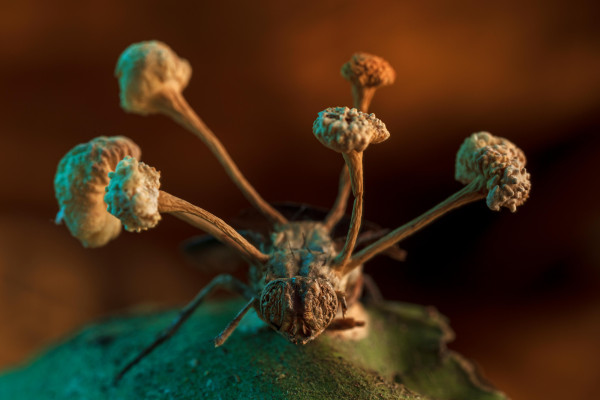
A fly in the Peruvian jungle of Tambopata is infected with Ophiocordyceps - a fungus that infects insects, takes over their minds and bodies, and forces them into their colony. Photo: Roberto García-Roa
These spores then grow out of their head and explode, infecting the whole insect population.
This freaky phenomenon is why the fungus is often called “Zombie Fungus”.
“The image depicts a conquest that has been shaped by thousands of years of evolution,” García-Roa said.
Fans of video games might recognise the fungus from popular series The Last of Us, in which this fungus passes to humans and destroys the world.
(For those interested in this story, but not into games, it is currently being adapted into a TV series by HBO.)
The competition had a range of categories with equally stunning winning photos.
Relationships in nature
The winner of this category was forest ecologist Alwin Hardenbol, who captured a Bohemian Waxwing eating rowan berries during the winter in Finland.
These birds travel from around the world to reach these berries, eating twice their own body weight in a day.
As the berries ripen, they become rich in ethanol, often leading to the birds becoming drunk.
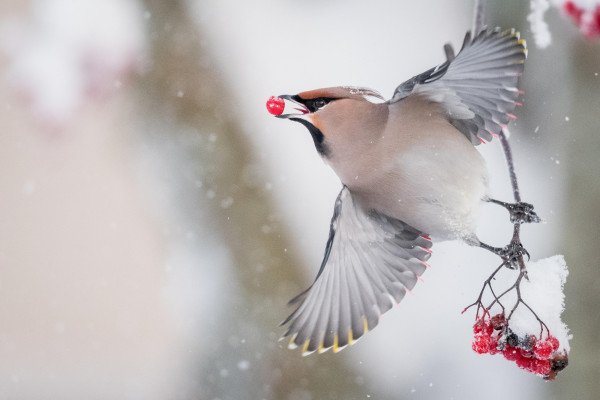
A Bohemian Waxwing eating rowan berries during the winter in Finland. Photo: Alwin Hardenbol
“Unsurprisingly, Waxwings have evolved to have a relatively large liver to deal with their inadvertent alcoholism,” Hardenbol said.
The runner-up in this category was behavioral biologist Alexander T. Baugh, who captured a fringe-lipped bat devouring a tungara frog in Panama.
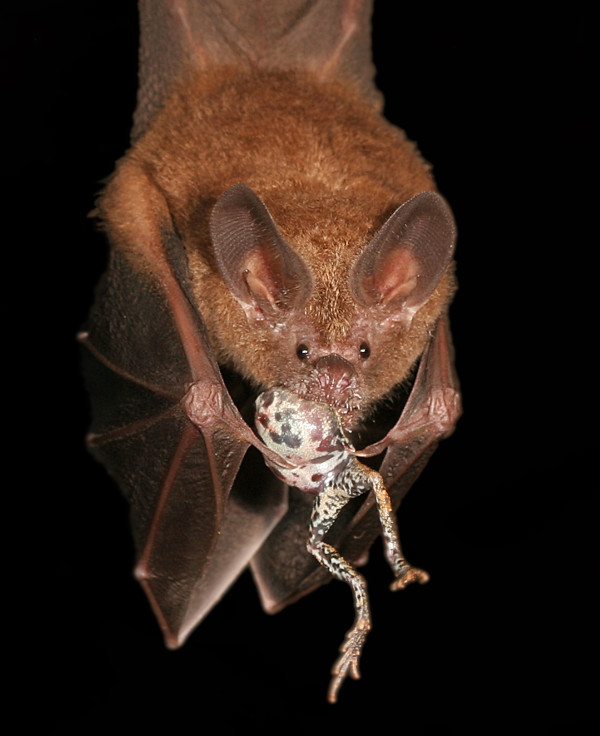
A fringe-lipped bat devouring a tungara frog in Panama. Photo: Alexander T. Baugh
Biodiversity under threat
The winner of this category was urban wildlife ecologist Samantha Kreling, who captured a group of African elephants sheltering under a Baobab tree during a drought in South Africa.
The marks on the tree are where elephants have stripped bark in search of water.
Although these trees have been an ecological staple of southern Africa for thousands of years, research shows they are struggling under the pressure of climate change.
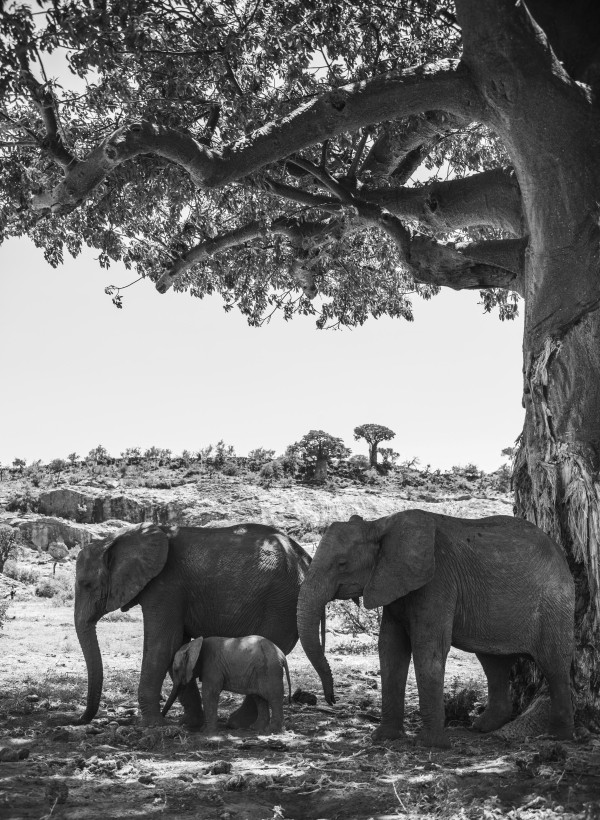
A group of African elephants sheltering under a Baobab tree during a drought in South Africa. Photo: Samantha Kreling
“Elephants have long gouged water from the trunks of these fast-healing trees, but as temperatures rise, the elephants are now doing more damage than the trees can cope with,” the BMC journal wrote.
The runner-up in this category was researcher Lindsey Swierk with their image of a tree frog clinging to eggs that have died during an off-season freeze of a pond in the United States.
This is just one example of how changing weather patterns due to climate change are impacting ecosystems, the journal noted.
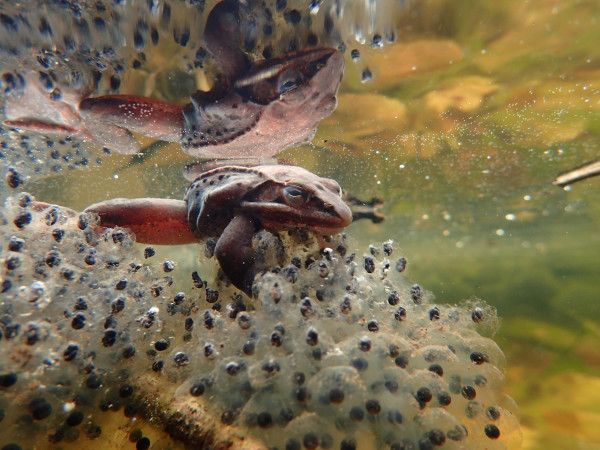
A tree frog clinging to eggs that have died during an off-season freeze of a pond in the United States. Photo: Lindsey Swierk
Life close up
The winning image in this category was also of tree frogs, but this time a hatch of healthy tree frog spawn.
Taken by ecologist Brandon André Güell, the close-up image shows the tree frogs inside their eggs at an early stage of development.
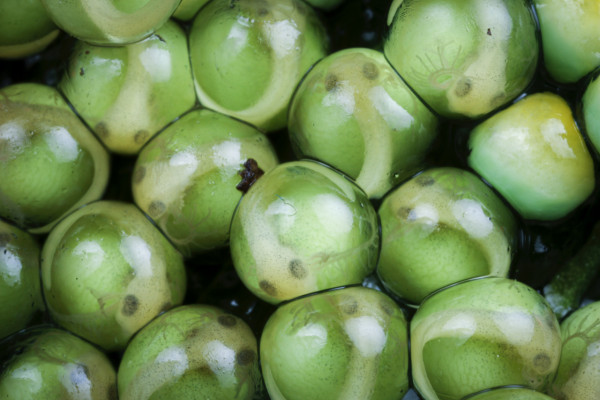
The close-up image shows the tree frogs inside their eggs at an early stage of development. Photo: Brandon André Güell
The runner-up, by Lindsey Swierk, is a close-up of a Water Anole lizard hiding from predators underwater.
“They can spend almost 20 minutes underwater, inhaling and exhaling a bubble of air that clings to their snout. Oxygen from this bubble is depleted over the underwater dive, which likely helps water anoles remain underwater for so long,” Swierk said.
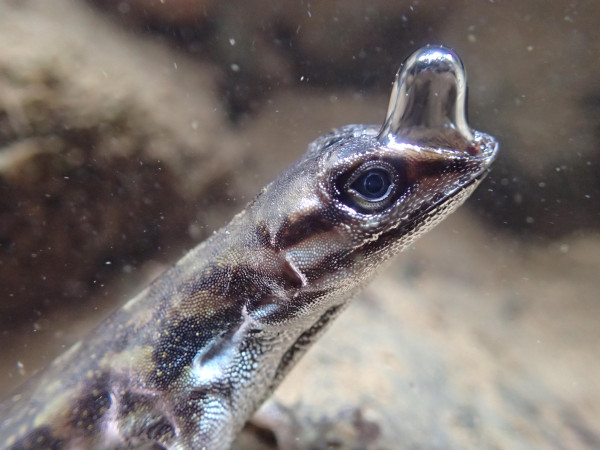
A close-up of a Water Anole lizard hiding from predators underwater. Photo: Lindsey Swierk
Top Image: A fly in the Peruvian jungle of Tambopata infected with Ophiocordyceps - a fungus that infects insects, takes over their minds and bodies, and forces them into their colony. Photo: Roberto García-Roa
More stories:
Kākāpō and pekapeka bow out of NZ's Bird of the Year competition
This year's competition will focus on some of our overlooked and underappreciated birds.
Stop what you're doing and look at the new images from NASA’s telescope
These new pictures show off our universe in never-before-seen detail.
Here is the most detailed image of the universe ever created
This image shows thousands of galaxies, each containing billions of stars.